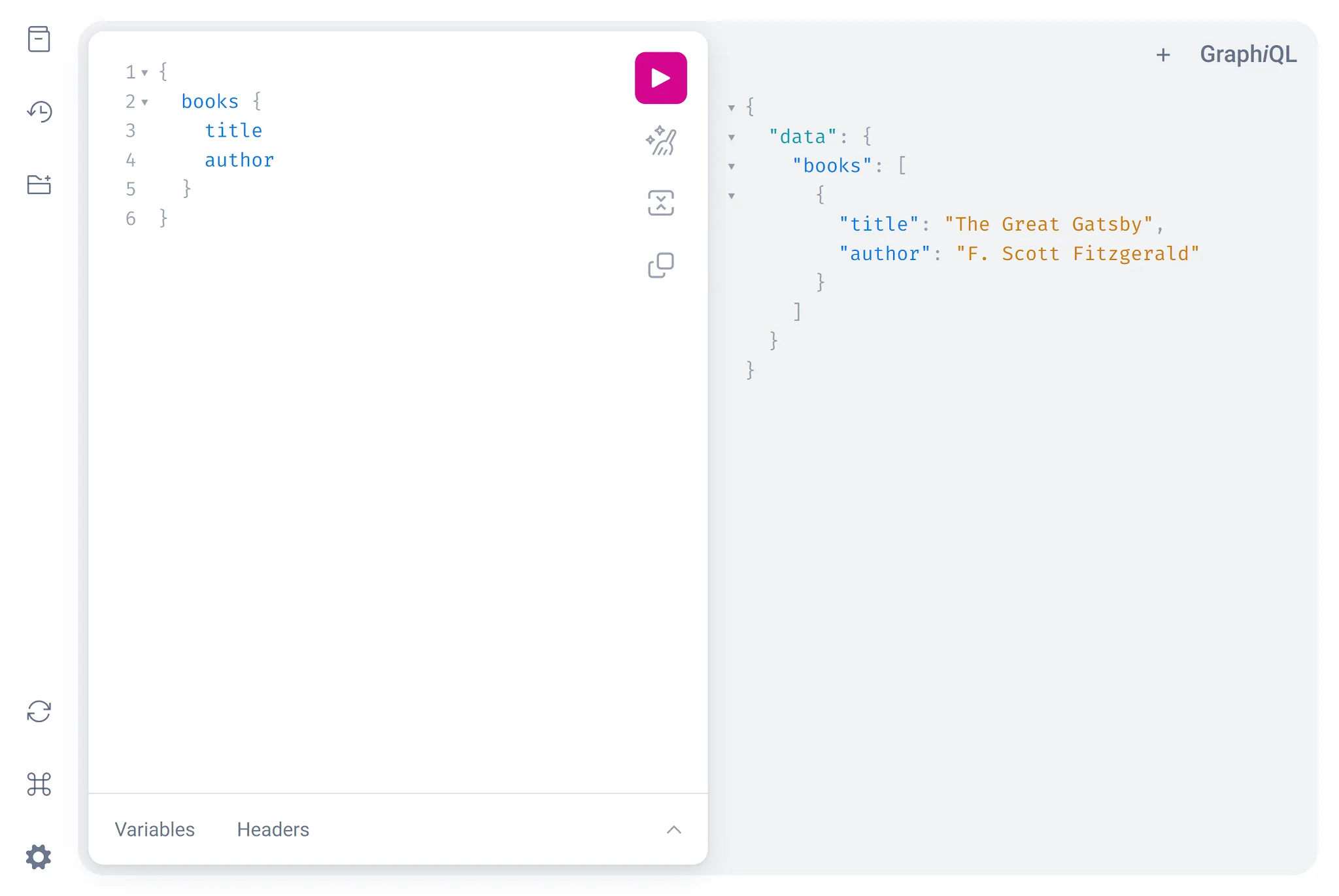Getting started with Strawberry
This tutorial will help you:
- Obtain a basic understanding of GraphQL principles
- Define a GraphQL schema using Strawberry
- Run the Strawberry server that lets you execute queries against your schema
This tutorial assumes that you are familiar with the command line and Python, and that you have a recent version of Python (3.8+) installed.
Strawberry is built on top of Python’s dataclasses and type hints functionality.
Step 1: Create a new project and install Strawberry
Let’s create a new folder:
mkdir strawberry-democd strawberry-demo After that we need a new virtualenv:
python -m venv virtualenv Activate the virtualenv and then install strawberry plus the debug server.
source virtualenv/bin/activatepip install 'strawberry-graphql[debug-server]' Step 2: Define the schema
Every GraphQL server uses a schema to define the structure of the data that clients can query. In this example, we will create a server for querying a collection of books by title and author.
In your favorite editor create a file called schema.py , with the following
contents:
import typingimport strawberry
@strawberry.typeclass Book: title: str author: str
@strawberry.typeclass Query: books: typing.List[Book] This will create a GraphQL schema where clients will be able to execute a query
named books that will return a list of zero or more books.
Step 3: Define your data set
Now that we have our structure of your schema, we can define the data itself. Strawberry can work with any data source (for example a database, a REST API, files, etc). For this tutorial we will be using hard-coded data.
Let’s create a function that returns some books.
def get_books(): return [ Book( title="The Great Gatsby", author="F. Scott Fitzgerald", ), ] Since strawberry makes uses of python classes to create the schema, this means that we can also reuse them to create the data objects.
Step 4: Define a resolver
We now have a function that returns some books, but Strawberry doesn’t know it should use it when executing a query. To fix this we need to update our query to specify the resolver for our books. A resolver tells Strawberry how to fetch the data associated with a particular field.
Let’s update our Query:
@strawberry.typeclass Query: books: typing.List[Book] = strawberry.field(resolver=get_books) Using strawberry.field allows us to specify a resolver for a particular field.
We didn’t have to specify any resolver for the Book’s fields, this is because Strawberry adds a default for each field, returning the value of that field.
Step 5: Create our schema and run it
We have defined our data and query, now what we need to do is create a GraphQL schema and start the server.
To create the schema add the following code:
schema = strawberry.Schema(query=Query) Then run the following command
strawberry server schema This will start a debug server, you should see the following output:
Running strawberry on http://0.0.0.0:8000/graphql 🍓 Step 6: execute your first query
We can now execute GraphQL queries. Strawberry comes with a tool called GraphiQL. To open it go to http://0.0.0.0:8000/graphql
You should see something like this:

The GraphiQL UI includes:
- A text area (to the left) for writing queries
- A Play button (the triangle button in the middle) for executing queries
- A text area (to the right) for viewing query results Views for schema inspection and generated documentation (via tabs on the right side)
Our server supports a single query named books. Let’s execute it!
Paste the following string into the left area and then click the play button:
{ books { title author }} You should see the hardcoded data appear on the right side:

GraphQL allows clients to query only the fields they need, go ahead and remove
author from the query and run it again. The response should now only show the
title for each book.
Next steps
Well done! You just created your first GraphQL API using Strawberry 🙌!
Check out the following resources to learn more about GraphQL and Strawberry.